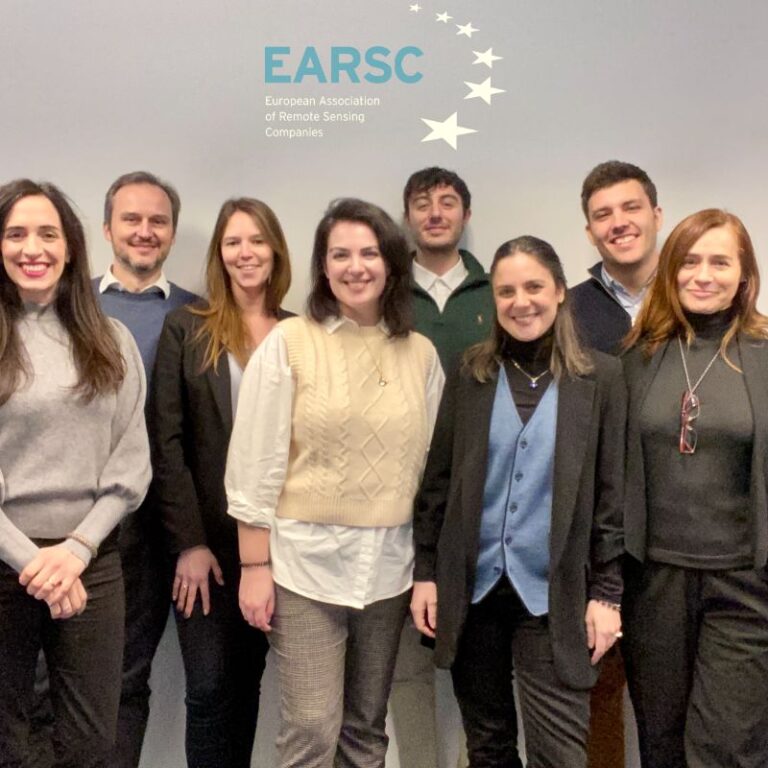I am really pleased to let you know that we
have just completed and published our latest survey into the state and health
of the European EO industry. It is our 4th survey which, up to now,
has been conducted every 2 years. It is really interesting to do; although a
large effort and quite a challenge! Each time, the results are eagerly awaited
and sought after. Published in 2019, the data refers to companies performance figures
in 2018.
This time around we have adapted our
methodology. We did this for two reasons:
- Firstly, to focus on the
European market, we have not sought or included data coming from Canadian
companies. There is already an annual survey, conducted in Canada by the space
agency, which provides data on the space sector and, although less detailed on
the EO downstream sector, does allow some comparative figures to be extracted.
- Secondly, to prepare ourselves for
the possibility to introduce a 2nd survey which will overlap our base
survey every other year. This will lead to the publication of a survey each
year where, whilst we do not expect the core data to change dramatically, it
could help identify trends more quickly. But, more importantly, a second survey
will enable us to gather data on new factors and indicators in the market.
Consequently, for this most recent survey, we
have undertaken direct research on the over 500 companies in our database. For
each one, we have looked at the relevant, national database for public information.
This has been complemented by additional information coming from a commercial,
company database. One of the advantages of this approach has been to allow us
to tidy up our database by recognising where companies no longer exist. It is
not easy to find new companies, but it is even harder to know when a company
disappears!! They might have been acquired, they may have gone bankrupt or
maybe have just changed names. With direct research, this is possible and
provides us with better information on the creation rate of companies.
So, what are the key findings?
Perhaps the most important is the growth
rate in the sector. Looking at all the three main parameters, the growth rate
is around, or even over, 10%. Hence the growth in the sector is sustained and
confirmed. Looking at the 3 key parameters:
- The number of companies in
Europe is found to be 515. With our new methodology this is almost certainly an
under-estimate, but we prefer this to adding an uncertain percentage to our
base figures. We believe that the discrepancy is not high and is less than 5%.
The growth rate in the number of companies is 6% but this ignores the companies
which have disappeared. Taking these into account, the creation rate of
companies is running at around 12% per annum. We shall be able to refine this
figure when we next complete the survey.
- The number of employees is just
under 8,400. These persons are employed in companies which are doing business
in EO services (data or value-added) and does not include those employed within
other companies to service that companies business needs ie in-sourcing; for
example, those in some companies in the oil and gas sector. The employment in
“Internal Service Departments” is a topic which we should dearly like to
investigate.
- The total revenues in the
sector, in 2018, was €1.24b. This has grown at 10.6% per annum, from a level of
just over €1b, since the previous survey. These numbers exclude Canada and are
adjusted to account for the impact of one large contract known as WorldDem.
In markets, we find a growth in the part of
the market linked to security, which is presumably driven largely by
defence-related work. Even more important is the share of the market which is
driven by the public sector. The sector revenues coming from governmental
sources has stayed relatively stable at 65% for all 4 of the surveys which we
have conducted. This includes R&D funding of around 14% and revenues coming
from government-as-a-customer of around 50% - 51% in 2018. That this share
remains relatively stable, demonstrates the importance of EO services for the
public decision makers.
But even this understates the impact on the
market as a part of the 14% R&D spend is made to improve the services which
the public sector can procure; for example, research to improve the core
Copernicus Services. If we conclude that 1/3rd of the R&D
investment is there to support the public mission (with 2/3rds dedicated to
supporting an industry mission), then 56% of the sector revenues are being
driven by government-as-a-customer and 9% for industrial sponsorship.
These findings are extremely important, as
I emphasised in a meeting with the Luxembourg parliament last week. Governments
are being asked to invest €5.8b in the next phase of Copernicus from 2021 to
2028. Only around 20% of this will go on the services. But this is an
investment of around €800m per annum which is supporting the generation of
those services necessary for the government mission. It is a heavy investment
in space assets; but is fully justified by the government role. Alongside this,
by procuring services from the industry, the government investment can be made
to yield double the results by enabling companies to do business in a market
sector growing at 10% per annum; further justifying the public budget. We
consider that a further programme of work should be considered (maybe by ESA
Member States?), as was indeed the case during the preparations for GMES, to
help prepare the services which shall be made possible from the new Copernicus
missions.
There are a number of important findings from the industry survey, but few are as important as the numbers underpinning the message above. To find out more, download the full survey here.

